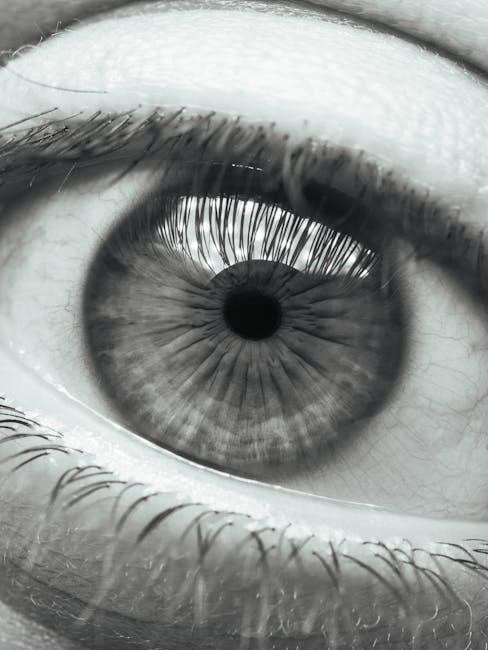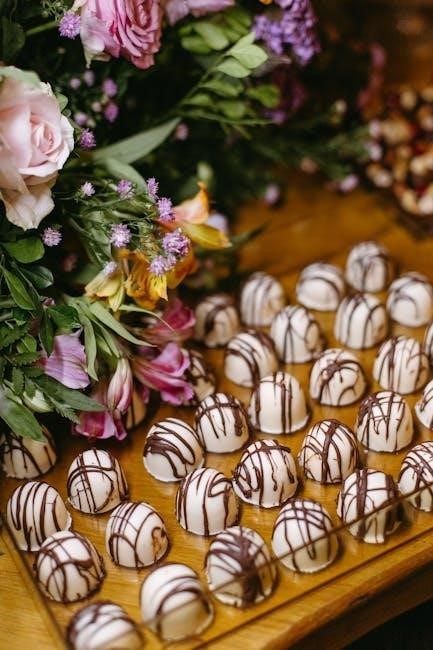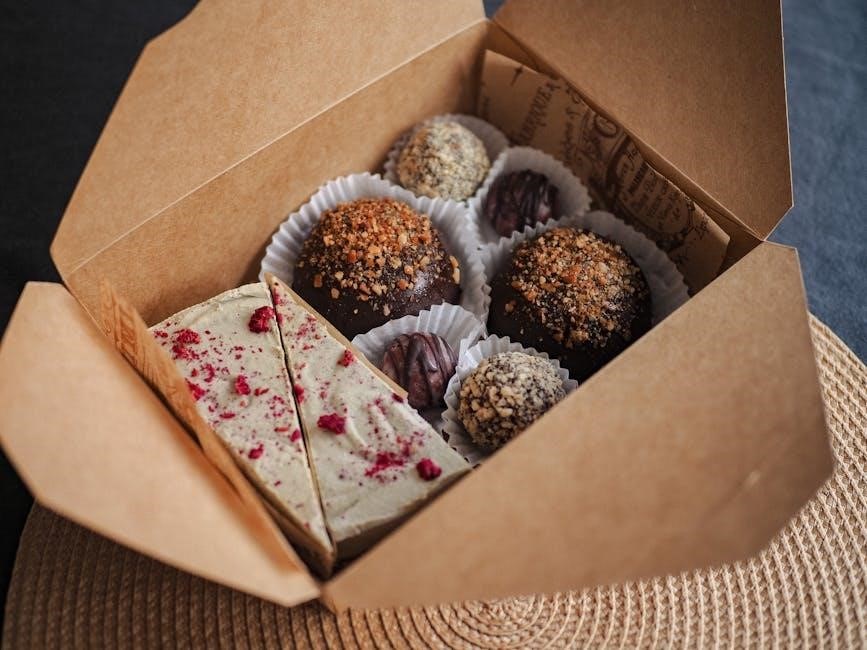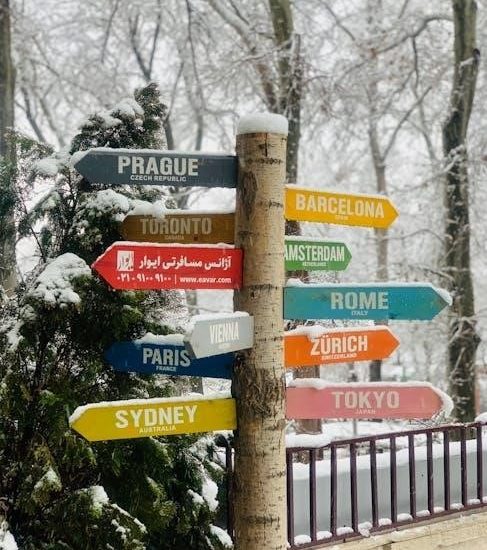Truffles are highly prized fungi, renowned for their distinctive aroma and flavor, making them a culinary gem. These underground delicacies grow near tree roots, forming symbiotic relationships. With species like white and black truffles, they are sought after for their unique taste and rarity.

Biology and Classification of Truffles
Truffles are fungi belonging to the genus Tuber, classified as ascomycetes. They form ectomycorrhizal relationships with tree roots, aiding nutrient exchange. Species like Tuber melanosporum (black truffle) and Tuber magnatum (white truffle) are prized for their unique aromas. Classification is based on spore features and physical traits. Truffles play a vital ecological role, enhancing plant nutrient uptake through symbiosis. Their growth habits and host tree associations are key to their development and distribution. Understanding their biology and classification is essential for identification and culinary appreciation.
Physical Characteristics for Identification
Truffles exhibit distinct physical features crucial for identification. Their outer skin, or peridium, varies in texture and color, ranging from smooth to warty. The interior, or gleba, displays a marbled pattern with veins. The color of the gleba differs among species, such as the white truffle’s pale interior and the black truffle’s dark, veiny core. Size is another factor, with most truffles ranging from 1 to 10 centimeters in diameter. Shape can vary from spherical to irregular, depending on growth conditions. Weight is a key indicator of freshness and quality; fresh truffles are firm and dense. The texture is typically rough, though some species, like the summer truffle, have a smoother surface. These physical characteristics, along with aroma, are essential for distinguishing between species and ensuring edibility. Proper identification requires careful observation of these traits to avoid confusion with lookalike fungi. Understanding these features is vital for both foraging and culinary use.
Sensory Identification
Sensory identification is crucial for recognizing truffles, focusing on aroma, texture, and appearance. The aroma of truffles is distinct and intense, varying by species. White truffles emit a pungent, earthy, and umami scent, while black truffles have a more subtle, nutty fragrance. Fresh truffles release a strong, piercing aroma that diminishes with age. Texture is another key factor; the skin is typically rough, warty, or smooth, depending on the species. Fresh truffles are firm to the touch, with a slightly elastic consistency. Overripe or damaged truffles may feel soft or mushy. Visually, truffles vary in color, from creamy white to dark black, with internal marbling that aids in species differentiation. The combination of these sensory traits—aroma, texture, and appearance—helps in accurately identifying truffles. Experienced foragers and chefs rely on these cues to distinguish high-quality, edible truffles from less desirable or inedible varieties. Sensory evaluation is the final step in confirming the identity and quality of a truffle, ensuring a culinary experience.

Common Types of Truffles
Several truffle species are highly prized for their unique flavors and aromas. The White Truffle (Tuber magnatum) is renowned for its intense, pungent aroma, often described as earthy and garlicky, making it a favorite in high-end cuisine. The Black Truffle (Tuber melanosporum) is slightly milder, with notes of dark chocolate and hazelnuts, and is commonly used in French and Mediterranean dishes. The Summer Truffle (Tuber aestivum) has a lighter, nuttier flavor and is often used in sauces and soups. The Burgundy Truffle (Tuber uncinatum) is known for its robust, fruity aroma and is frequently shaved over pasta and meat dishes. Other notable varieties include the Pecan Truffle and Ornamented Truffle, each with distinct flavor profiles. These truffle species vary in color, texture, and odor, making them unique additions to culinary creations. Understanding the differences between these types helps in selecting the right truffle for specific dishes, enhancing both flavor and presentation.
Geographic Distribution
Truffles are found in various regions around the world, with specific species thriving in distinct climates and terrains. Italy and France are renowned for their truffle production, particularly the white truffle in Italy’s Piedmont region and the black truffle in France’s Provence. Spain, especially the regions of Catalonia and Aragon, is also a significant producer of black truffles. Croatia and parts of Eastern Europe, such as Hungary and Romania, have emerging truffle cultures, with species like the summer truffle gaining popularity. In North Africa, countries like Morocco and Algeria are home to native truffle species that grow in arid climates. Asia, particularly China, has seen a rise in truffle cultivation, with Sichuan Province being a notable area. In the Americas, the United States, especially the Pacific Northwest and Appalachian regions, hosts native truffle species, while countries like Mexico and Argentina are exploring truffle farming. This global distribution highlights the adaptability of truffles to diverse environments, making them a treasured delicacy worldwide.
Tree Associations
Truffles form symbiotic relationships with specific tree species, a key factor in their growth and distribution. Common host trees include oak, hazelnut, beech, and pine, with different truffle species preferring distinct tree associations. For instance, the Summer Truffle (Tuber aestivum) often thrives near oak, chestnut, and pine trees, while the Black Truffle (Tuber melanosporum) is typically found in association with oak and hazelnut trees. In Italy, white truffles are commonly discovered near poplar, oak, and willow trees. These associations are crucial for truffle hunters, as they help narrow down potential foraging areas.
The relationship between truffles and their host trees is mutualistic; truffles assist in nutrient exchange, while the trees provide carbohydrates. This symbiosis is vital for the truffle’s life cycle. Understanding these tree-truffle connections is essential for effective foraging and conservation efforts, as it highlights the interconnectedness of forest ecosystems and the importance of preserving these delicate relationships.

Techniques for Finding Truffles
Finding truffles requires a combination of knowledge, skill, and patience. Truffle hunters often rely on trained animals, such as dogs or pigs, to detect the fungi’s distinctive aroma. Truffle dogs are particularly effective, as they can locate mature truffles buried 6-12 inches underground. Training these dogs involves gradually introducing them to truffle scents and rewarding them for successful finds. Alternatively, experienced hunters may use rakes or specialized tools to gently probe the soil in areas where truffles are known to grow.
Another technique involves observing natural signs, such as the presence of specific insects like the suillia fly, which lays eggs near truffles. Hunters also look for bare patches of earth or areas where the ground appears disturbed, as these can indicate truffle growth beneath. Seasonal timing is crucial, as most truffle species have specific periods when they mature and emit their strongest aroma. By combining these methods with knowledge of truffle habitats, enthusiasts can increase their chances of uncovering these elusive fungi.

The Role of Truffle Dogs
Truffle dogs play a vital role in the art of truffle hunting, as they possess a keen sense of smell that allows them to detect the distinctive aroma of mature truffles buried underground. These dogs are trained to locate truffles without damaging them, making them indispensable companions for both professional hunters and enthusiasts. The training process involves gradually introducing the dog to the scent of truffles, often using rewards to reinforce positive behavior. Over time, the dog learns to associate the truffle’s unique smell with the task of locating it in the wild.
Truffle dogs are particularly effective because they can detect truffles at depths of 6-12 inches, far beyond human sensory capabilities. Breeds such as the Lagotto Romagnolo and Labrador Retriever are often favored for their strong olfactory abilities and trainability. Once a truffle is located, the dog alerts the handler, who carefully unearths the fungi to preserve its integrity. This collaborative effort between dog and handler is essential for successful truffle foraging, ensuring that these elusive delicacies are found and enjoyed at their peak quality.
Truffle Buying Guide
When purchasing truffles, it is crucial to ensure they are fresh and of high quality. Buy truffles during their season to savor their peak flavor and aroma. Look for firm, dense truffles with a robust scent, as soft or dry ones may indicate poor quality or spoilage.
Black truffles typically cost around $100 per pound, while white truffles are even more expensive. For a budget-friendly option, consider cultivated truffles, which are priced lower at about $30 per pound. Not all truffles are edible, so ensure you purchase from reputable sources.
Store truffles in a cool, dry place to preserve their aroma and texture. Use them sparingly, as their flavor is potent and best enjoyed in small quantities. For culinary use, shave or grate truffles over dishes like pasta, risotto, or meat to enhance their unique taste.
Avoid buying truffles that are too soft or have a moldy smell, as these signs indicate decay. Fresh truffles should have a rich, earthy aroma and a slightly elastic texture. By following these guidelines, you can select the best truffles for your culinary creations.

Culinary Uses and Tips
Truffles are a culinary treasure, offering an unparalleled depth of flavor and aroma to dishes. One of the most popular ways to enjoy truffles is by shaving them over pasta, risotto, or meat dishes, as their delicate flavor is best experienced raw. For a decadent treat, try making truffle butter by blending softened butter with finely chopped truffles, then spreading it on bread or melting it over vegetables or meats.
Another creative use is infusing truffle aroma into oils or creams. Simply place thinly sliced truffles in a jar with warm oil or heavy cream, allowing the flavors to meld over a few days. This infused oil can elevate everything from salads to soups. When cooking with truffles, remember that their flavor is potent, so use them sparingly to avoid overpowering the dish.
For a luxurious finish, shave truffles over eggs, cheese dishes, or even popcorn for a gourmet touch. To preserve their aroma, store truffles in a cool, dry place and use them within a few days. Truffle risotto, a classic dish, combines Arborio rice, broth, and grated truffles for a creamy, indulgent meal. These culinary tips ensure you make the most of this prized ingredient and enhance your dishes with its unique charm.
Conservation and Sustainability
Conserving truffle habitats is essential to sustain these precious fungi and their ecosystems. Over-harvesting and habitat loss threaten truffle populations, making sustainable practices crucial. Truffle farming offers a viable solution, cultivating species like black and white truffles under controlled conditions.
Regulated harvesting ensures that truffles are collected without harming the mycelium or the host trees. Dogs, rather than pigs, are often used for harvesting to minimize soil disturbance. Education is key; informing foragers and chefs about sustainable practices helps protect these fungi.
Efforts to study and protect truffle habitats focus on preserving biodiversity; Collaborations between scientists, farmers, and conservationists promote eco-friendly methods. By supporting sustainable practices, we can ensure that truffles remain a culinary delight for generations to come.

Common Lookalikes and Mistakes
When identifying truffles, it’s crucial to distinguish them from lookalike fungi to avoid mistakes. Common lookalikes include the false truffle (Elaphomyces species), which resembles truffles but lacks their distinctive aroma. Another common confusion is with geba’s cup (Peziza badia), a fungus that grows in similar habitats but has a cup-like shape.
Mistakes often occur due to insufficient knowledge of truffle characteristics. For instance, some foragers confuse immature or decayed truffles with edible species. Additionally, over-reliance on surface signs, like insect activity, can lead to misidentification, as other fungi attract similar insects.
Another common error is mishandling truffles during cleaning or storage, which can damage their delicate structure and aroma. Proper techniques, such as gently brushing soil and storing truffles in air-tight containers, are essential to preserve quality.
Education and experience are key to avoiding these pitfalls. Consulting field guides or experts can help beginners improve their identification skills and avoid costly mistakes.
Truffles are a culinary treasure that combines unique flavors, aromatic complexity, and rarity, making them highly sought after. Identifying truffles requires a blend of knowledge, skill, and patience, as their elusive nature and similarity to other fungi can lead to mistakes. Understanding their biology, physical traits, and sensory characteristics is essential for distinguishing genuine truffles from lookalikes.
The journey of truffle identification involves not only recognizing species but also mastering techniques for locating and preserving them. Whether you’re a seasoned forager or a culinary enthusiast, truffles offer a world of discovery and delight. By leveraging expert guides, tools like trained dogs, and hands-on experience, you can enhance your ability to identify and appreciate these fungi.
Remember, the world of truffles is vast and rewarding, with each species offering unique qualities. Embrace the challenge of identification, explore their culinary potential, and respect their role in nature. With dedication, you’ll unlock the secrets of these underground gems and elevate your appreciation for the art of truffle identification.





